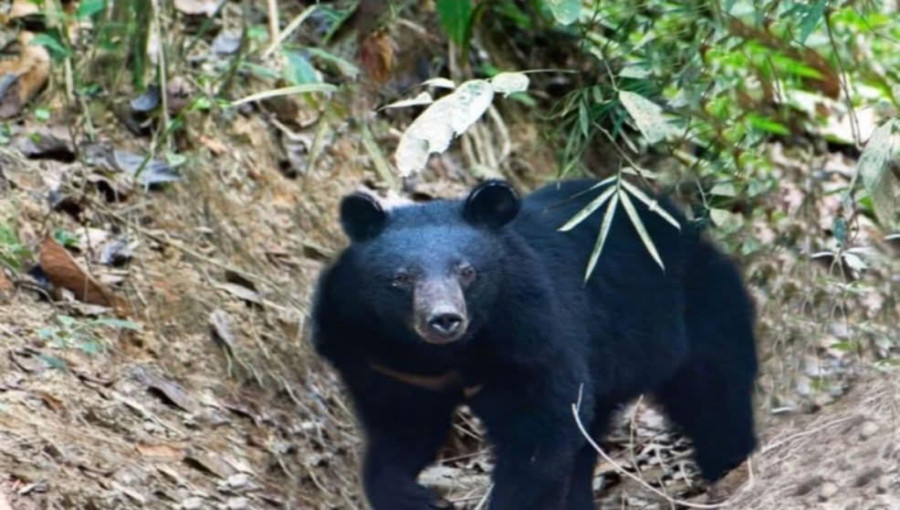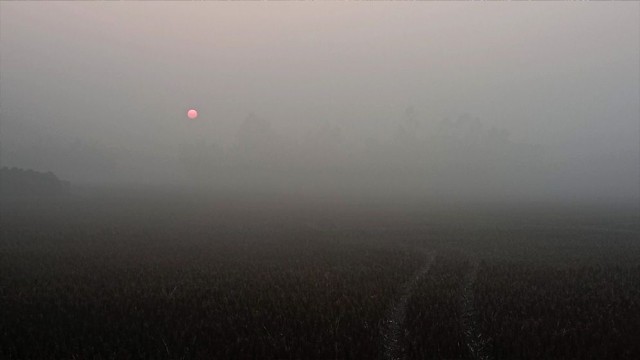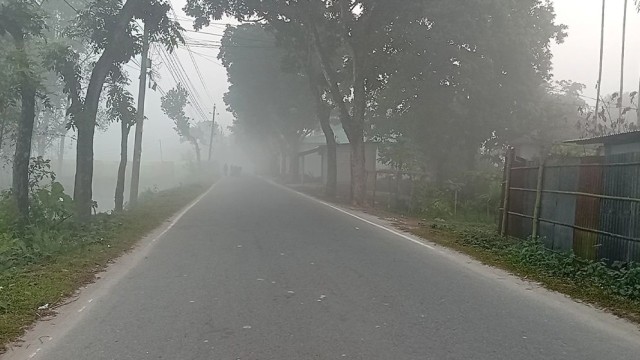Habiganj, Jan 23, (V7N) - A rare species of wild bear, the Asiatic Black Bear, has been spotted in the deep forests of Satchhari National Park in Habiganj. The bear, which is considered endangered, was captured on camera by local amateur photographer Haris Deb Burma. The discovery has caused a stir in the region.
Following the sighting, park authorities have issued special alerts to restrict public movement within the park to ensure safety. According to sources from the Forest Department, this bear is part of the Asiatic Black Bear species, which is increasingly rare and facing the threat of extinction. These bears are known for their aggressive nature, and forest officials estimate that there are approximately 10-12 bears residing in the park, both large and small.
Mamunur Rashid, the Beat Officer of Satchhari National Park, mentioned that the discovery of the bear has caused significant concern within the park management. "We are taking extra steps to ensure its conservation," he stated. "We are also warning tourists about the safety risks of entering the park at this time." Despite the excitement, no one has been attacked by the bear so far.
Mehedi Hasan, an officer from the Telmachra Beat, added that while the park is typically home to animals like deer, wild cats, and wild boars, the recent discovery of the bear has prompted the need for more rigorous monitoring of wildlife and increased conservation efforts.
Abdul Jahir Mia, Joint Secretary of the Press Club of Chunarughat, emphasized the importance of preventing the illegal hunting and trafficking of these bears. "Indigenous communities living in the forest must be vigilant to ensure that the bears are not killed or harmed," he said. "Additionally, it's crucial to create an environment that provides enough food for the bears and to strictly prohibit hunting of wildlife within the park."
About the Asiatic Black Bear:
The Asiatic Black Bear (Ursus thibetanus), also known as the moon bear due to the characteristic white crescent shape on its chest, is a large species of bear found across the forests of Asia. The species is classified as vulnerable by the International Union for Conservation of Nature (IUCN), mainly due to habitat loss, poaching, and human-wildlife conflict.
These bears are typically black with a light brown face and a distinctive white or cream-colored chest patch that often forms the shape of the letter "V" or an incomplete crescent. They are omnivorous and have a diverse diet, feeding on fruits, roots, tubers, honey, insects, and small vertebrates, as well as the occasional larger prey.
Adult Asiatic Black Bears are large, with adult males weighing between 60 to 200 kg (130 to 440 pounds), and females generally weighing less. They have a thick, dense coat of fur that helps protect them from the cold in mountainous regions. These bears are mainly solitary creatures and are typically nocturnal, coming out at night to forage for food.
Conservation Status:
The Asiatic Black Bear faces threats from habitat destruction, illegal hunting for its body parts (such as for traditional medicine or to be sold on the black market), and human encroachment into its natural habitats. The species is currently found across various parts of Asia, including the Himalayas, parts of Southeast Asia, and in forests of China, Korea, and Russia. However, their populations are declining in many areas due to deforestation and human activities.
In Satchhari National Park, the Asiatic Black Bear's presence highlights the ecological significance of the area and the importance of its conservation. The park, a haven for various species of wildlife, now faces new challenges in ensuring the protection of this rare bear species. Park authorities are working closely with local communities and wildlife conservationists to safeguard the bear and its natural environment.
Public Safety Measures:
While the park has urged tourists to exercise caution and avoid venturing too close to areas where the bears have been spotted, no bear attacks have been reported as of yet. The authorities continue to monitor the situation and emphasize that visitors should respect the park’s safety guidelines, which are designed to prevent conflict between humans and wildlife.
In conclusion, the sighting of the Asiatic Black Bear in Satchhari National Park has sparked both excitement and concern. It serves as a reminder of the importance of wildlife conservation and the ongoing need to protect endangered species from threats that could lead to their extinction.
END/AJM/SMA/































Comment: